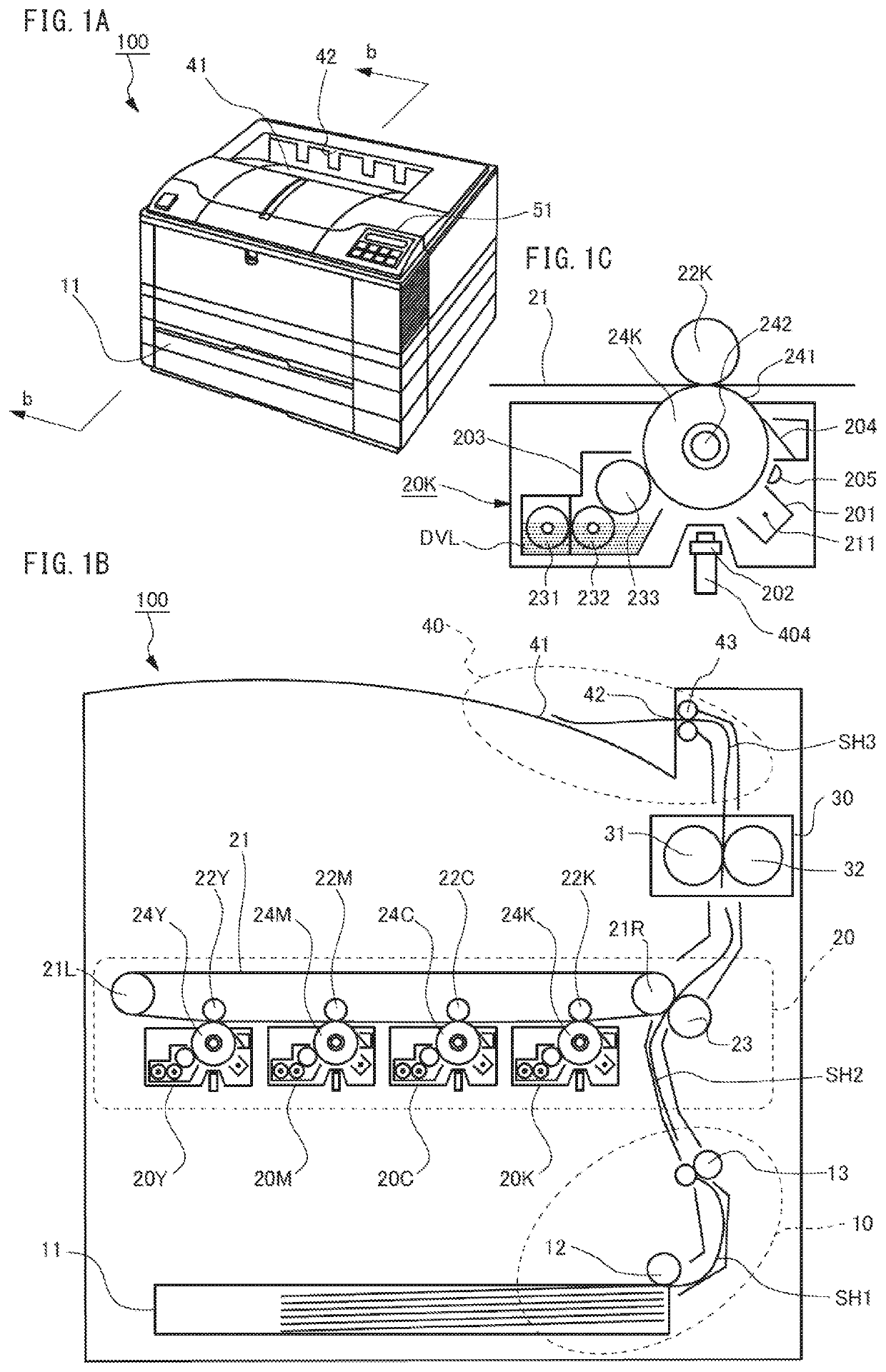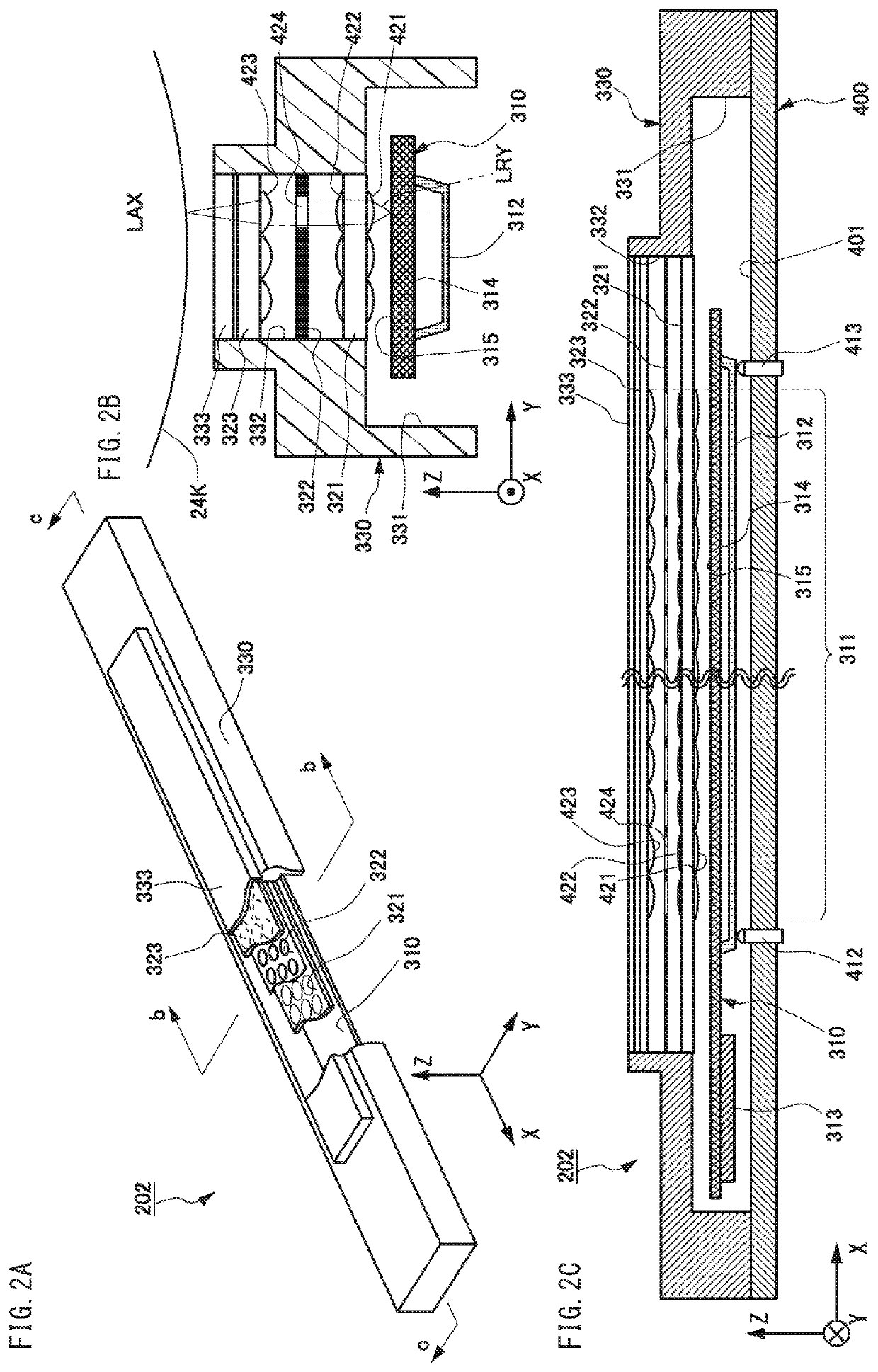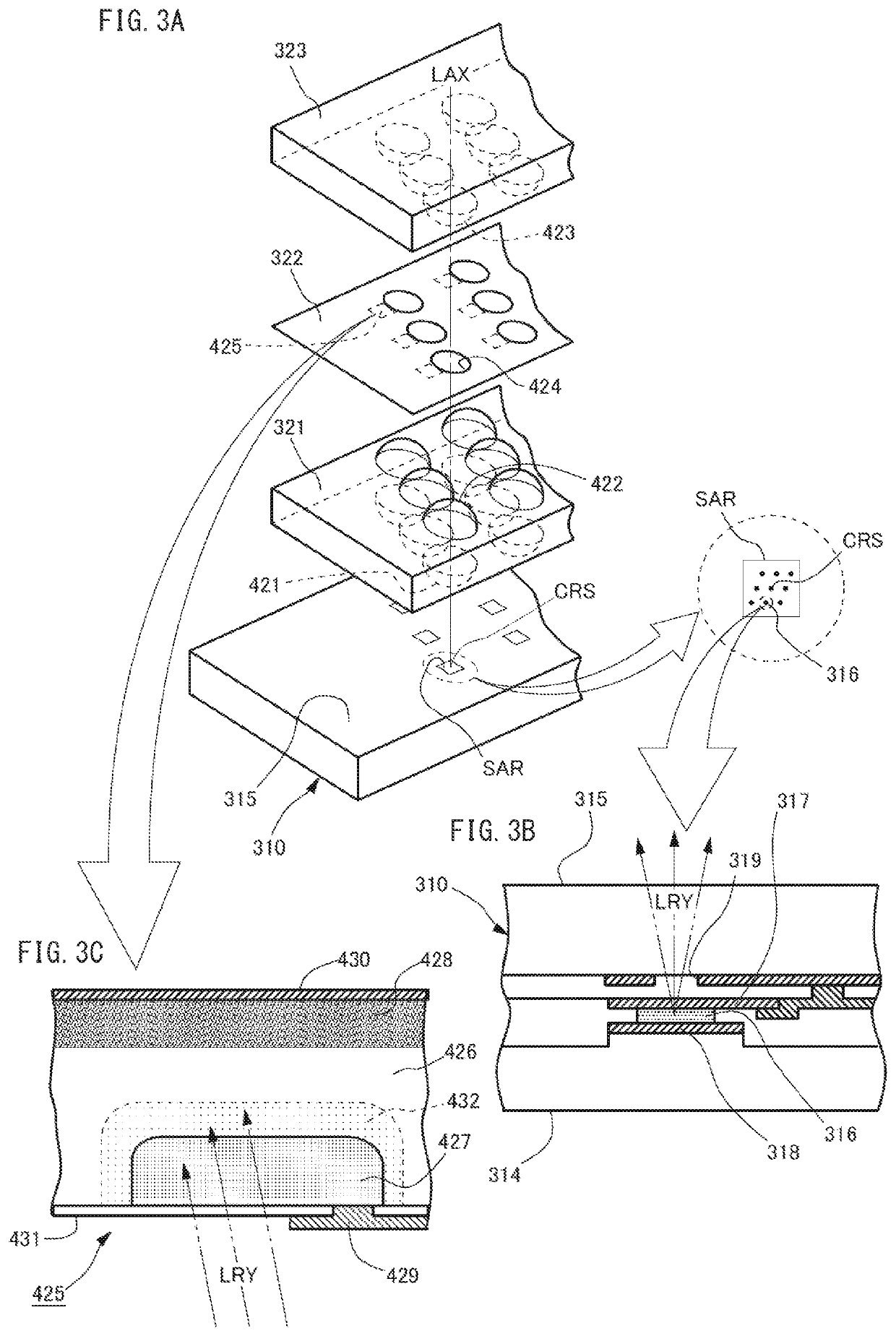Print head and image forming device having the same
a technology of image forming device and print head, which is applied in the field of print head, can solve the problems of uneven exposure along the photoreceptor surface line, further improvement of calibration accuracy, and differences in light emission amount with respect to constant current, and achieves improved image quality and image quality. the effect of image forming device and higher performan
- Summary
- Abstract
- Description
- Claims
- Application Information
AI Technical Summary
Benefits of technology
Problems solved by technology
Method used
Image
Examples
Embodiment Construction
[0018]The following is a description of one or more embodiments of the present invention with reference to the drawings. However, the scope of the invention is not limited to the embodiments described.
[Image Forming Device Appearance]
[0019]FIG. 1A is a perspective view illustrating appearance of an image forming device 100 pertaining to an embodiment of the present invention. The image forming device 100 is a printer. A discharge tray 41 is provided on a top surface of a casing of the image forming device 100, and stores sheets discharged from a discharge opening 42 towards a rear of the image forming device 100. An operation panel 51 is embedded forward of the discharge tray 41. A paper feed cassette 11 is attached to a bottom portion of the printer 100 in a way that allows the paper feed cassette 11 to be pulled out.
[Internal Configuration of Printer]
[0020]FIG. 1B is a schematic cross section of the printer 100 taken along the straight line b-b indicated in FIG. 1A. The printer 10...
PUM
| Property | Measurement | Unit |
|---|---|---|
| diameter | aaaaa | aaaaa |
| charge distribution | aaaaa | aaaaa |
| time | aaaaa | aaaaa |
Abstract
Description
Claims
Application Information
 Login to View More
Login to View More - R&D
- Intellectual Property
- Life Sciences
- Materials
- Tech Scout
- Unparalleled Data Quality
- Higher Quality Content
- 60% Fewer Hallucinations
Browse by: Latest US Patents, China's latest patents, Technical Efficacy Thesaurus, Application Domain, Technology Topic, Popular Technical Reports.
© 2025 PatSnap. All rights reserved.Legal|Privacy policy|Modern Slavery Act Transparency Statement|Sitemap|About US| Contact US: help@patsnap.com



